#Sanskrit Sutras
Text
Indian Scholar, Dr. Rishi Rajpopat Decodes Sanskrit Algorithm in Panini’s Texts
Indian Scholar, Dr. Rishi Rajpopat Decodes Sanskrit Algorithm in Panini’s Texts
Dr. Rishi Atul Rajpopat
Indian Scholar, Dr. Rishi Rajpopat, at Cambridge solves a 2500-Year-Old Sanskrit Algorithm Problem in Panini’s Texts
Rishi Atul Rajpopat, a Ph.D. scholar at the faculty of Asian and Middle Eastern Studies at St. John’s College, Cambridge, has solved a grammatical problem posed by the texts written by ancient Sanskrit scholar Paṇini. While researching for his Ph.D.…

View On WordPress
#algorithms#cambridge university#Dr. Rishi Rajpopat#Dr. Suresh Kaushik#grammer rules#meta-rule#natural language processing#Panini#Sanskrit Sutras
1 note
·
View note
Text
“...the eyes are the condition for forms to be seen, but the consciousness that depends on the eyes has no form. The ears are the condition for sounds, but the auditory consciousness has no form. The nose is the condition for smell, but the olfactory consciousness has no form. The tongue is the condition for taste, but the gustatory consciousness has no form. The body is the conditioning factor for touch, but the tactile consciousness has no form. Neither the sphere of mental objects nor knowledge have form”.
--Bhadrapāla Sūtra
#sutra#bhadrapala#buddhism#sanskrit#mahayana#meditation#sensation#sense#sensory organs#literature#religious studies#comparative religion
283 notes
·
View notes
Text



bat’s signature thoughts except i’m just spitting straight bs lmao
📿:
compared to his team’s pen calligraphy influences, kuukou picked up a marker and went to town lol
his brush calligraphy experience jumped out tho on those ‘h’ and ‘k’ very bold strokes
kuukou’s ‘u’ is actually derived from ‘प’ which is a sanskrit character found in the sanskrit version of his last name so kuukou’s multilingual with like hindi and/or pali
the six arrows on kuukou’s are symbols of the six perfections, core traits an enlightened person must have
🌙:
the extra dashes jyushi adds to his letters, like the ‘o’s for example, are similar to the dashes in the bb logo jyushi is now the newest bb member
the way jyushi writes his ‘a’s look like a tail with a hook, so a devil’s tail, devil’s flower release confirmed
the strokes above the jyushi’s j actually symbolise amanda, those lines combined with the ‘j’ make up an umbrella shape and it’s not jyushi providing shelter from this storm this rain as his microphone symbolises, it’s just amanda who is also on his umbrella lmao
⚖️:
his pen calligraphy with old english influences says that with his juvenile interest in magic and black and white striped socks, hitoya was witchcore as a teen
he underlined the guni on his last name, the kanji that means nation, so he’s putting on emphasis that this is for the nation guys lol
he dotted his ‘i’s like diamonds so like, diamond eyes hitoya’s eye colour confirmed
or that he’s either a deftones fan or a shinedown fan. or both lol!!!!!!!!
#this is vee speaking#lol what???? some of these sound legit????#idk what you mean i was not serious about any of these lol#tho lol if you told me that kuukou casually spitting out indian versions of his buddhist gods and sutras#while also wearing sanskrit on his clothes means he at least has to have studied pali and or hindi well!!!!!!#who am i to say otherwise lol!!!!!!#am i pushing weathering the storm imagery with jyushi’s umbrella mic again????? nope that’s a coincidence 🤗🤗🤗#the devil’s flower thing???? that was just a threat made lightheartedly lol!!!!!! 🤗🤗🤗(😡😡😡)#boy it would be nice if the guidebook stated what everyone’s eye colour is!!!!! grey hazel is a mouthful and diamond kinda sounds cooler!!!!#so it’d be great if kr could define that before i start getting ideas or something lmao!!!!!
18 notes
·
View notes
Photo

Sanskrit Heart Sutra in the Mongolian Ali Gali script
30 notes
·
View notes
Text
thinking about blorbos too hard. had to get sedated
#help.#why is the heart sutra in japanese so catchy#and beautiful#imma be listening to it as i falls asleep#it’s so pretty i’m losing my mind#i can’t even use it because i want it to be in the oringal san skirt#<- sanskrit for a thing i’m working on#but sweet peaches it’s so pretty#catch me chanting ut at work. Gwtting all the words wrong#i’m sorry in advance because this just became an ear worm#🐊#speck can’t sleep#speck rambles
11 notes
·
View notes
Text

Despite what the song says, a kiss isn’t always just a kiss.
A kiss can be political, because it’s the first of its kind or because it’s between two heads of state.
A kiss can also become iconic when it’s captured on film, even if the kiss itself was invasive and unwanted.
With that in mind, here’s a list of some of the most memorable kisses in history.
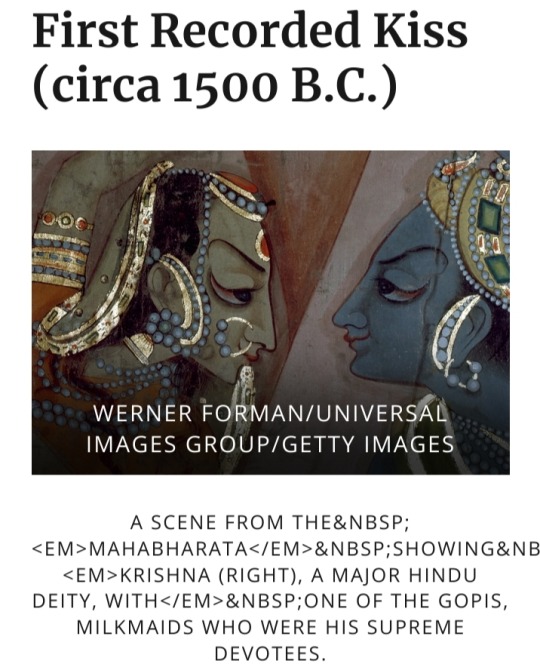
Scholars debate whether kissing began as a trend that spread around the globe, or sprung up organically in different regions.
Whatever the case, the earliest known written mentions of it are in Vedic Sanskrit scriptures circa 1500 B.C., according to research by Vaughn Bryant, an anthropology professor at Texas A&M University.
These scriptures, known as the Vedas, were foundational to the religion of Hinduism.
After that, kissing continued to appear in ancient Indian and Hindu literature.
The Mahabharata, a Sanskrit epic compiled by the 4th century A.D., has a line in which someone “set her mouth to my mouth and made a noise that produced pleasure in me.”
The Kama Sutra, an ancient Sanskrit text on eroticism and love, also has a chapter on kissing that identifies different methods of kissing and types of kisses.

Kissing isn’t just a romantic act. It can also be a sign of friendship or betrayal.
In the Gospels of Matthew and Mark, written circa the 1st century, Judas betrays Jesus by identifying him with a kiss so that armed men can take him away and eventually kill him.
Judas’ kiss has since become a popular storytelling allusion.
It may have inspired the “kiss of death” that appears in mafia literature and film (but was probably never an actual mafia practice).
Perhaps the most famous example is in The Godfather Part II, when Al Pacino’s character gives his brother Fredo the kiss of death for betraying him.

The first people to smooch on film were May Irwin and John C. Rice, who appeared in a short film known variously as May Irwin kiss, Kiss, or The Kiss.
In 1896, the two performers went to Thomas Edison’s studio in New Jersey and reenacted their final kiss scene from a play they were putting on in New York City.
On stage, no one thought the kiss was that sensational. But many felt the close-up footage of them kissing was too risqué.

In 1898, black performers Saint Suttle and Gertie Brown starred in a short film titled ''Something Good-Negro Kiss,'' the first film to show Black Americans kissing.
In 2017, film historians rediscovered the footage, which was filmed by a white man named William Selig in Chicago.
“There’s a performance there because they’re dancing with one another, but their kissing has an unmistakable sense of naturalness, pleasure and amusement as well,” Allyson Nadia Field, a professor of cinema and media studies at the University of Chicago who helped identify the film, said in a university press release.
“It is really striking to me, as a historian who works on race and cinema, to think that this kind of artifact could have existed in 1898.”

On the morning of 14 August 1945, patients burst into Greta Zimmer’s Manhattan office claiming the war in Japan was over.
The Austrian immigrant wasn’t sure what to think, so on her lunch break, she went to Times Square in her white dental assistant’s uniform to see what the news ticker said.
The atmosphere there was celebratory. The ticker confirmed that it was indeed V-J Day, and World War II was over.
As Zimmer looked away from the ticker, a Navy sailor named George Mendonsan — who’d started drinking early and mistook Zimmer for a nurse — ran up and aggressively kissed her, leaving his girlfriend behind.
Zimmer struggled to push the stranger off, and they parted ways.
But unbeknownst to both of them, photographers Alfred Eisenstaedt and Victor Jorgensen had each captured the moment, as recounted in The Kissing Sailor: The Mystery Behind The Photo That Ended World War II.
Eisenstaedt’s photo became one of the most iconic WWII images in U.S. history, in part because viewers mistook it for a picture of a Naval officer and nurse celebrating together.
The photo has also stirred controversy, as many people have claimed over the years to be the couple in the image, while others point out that it depicts a nonconsensual moment.
Zimmer said in an interview with the Library of Congress in 2005:
“It wasn’t my choice to be kissed...the guy just came over and kissed or grabbed!”

When William Shatner and Nichelle Nichols kissed on a 1968 episode of Star Trek, it was not technically the first interracial kiss on U.S. television.
But it was the one that seemed to have the most cultural impact.
In the episode, titled “Plato’s Stepchildren,” Captain James Kirk and Officer Nyota Uhura encounter aliens who force them to kiss each other through telekinesis.
In Nichols’ book Beyond Uhura: Star Trek and Other Memories, she recalls that NBC was worried how white Americans would react to the scene, so they asked the actors to film two scenes: one with a kiss and one without a kiss.
However, Nichols and Shatner purposefully messed up all of the kissless takes in order to ensure that NBC aired the kissing scene.

During the Cold War, leaders of communist states often greeted each other with what’s called the “socialist fraternal kiss.”
This could be on the cheek or the mouth, but the most famous example is French photographer Régis Bossu’s 1979 picture of the Soviet Union’s Leonid Brezhnev and East Germany’s Erich Honecker kissing on the mouth.
The kiss occurred when Brezhnev visited East Berlin to celebrate the 30th anniversary of the German Democratic Republic (i.e., East Germany).
When the Berlin Wall came down in 1989, the Soviet artist Dmitri Vrubel recreated the image in a mural on the wall’s east side.
He captioned it: “My God, Help Me to Survive This Deadly Love.”
#Memorable Kisses in History#kiss#history#Vedic Sanskrit scriptures#Vedas#The Mahabharata#The Kama Sutra#Judas#Jesus#May Irwin#John C. Rice#Saint Suttle#Gertie Brown#William Selig#Greta Zimmer#Alfred Eisenstaedt#Victor Jorgensen#V-J Day#World War II#Star Trek#William Shatner#Nichelle Nichols#Socialist Fraternal Kiss#Régis Bossu#Leonid Brezhnev#Erich Honecker#German Democratic Republic#Berlin Wall#Dmitri Vrubel#Judas Kiss
2 notes
·
View notes
Photo
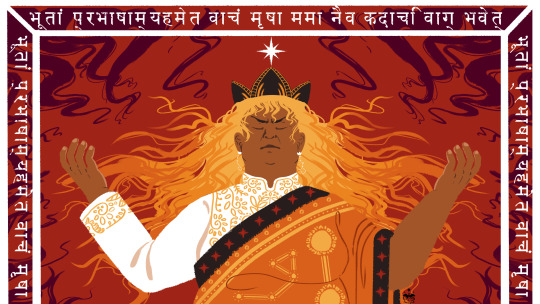

“If someone does not want me it is not the end of the world.
But if I do not want me, the world is nothing but endings.”
#touhou#2hu#okina matara#my art#art by op#yeah this is vent art that's why it's a little sloppy#the sanskrit text was supposed to be a line from the Lotus Sutra saying:#You should now awaken the power of faith And with perseverance abide in the good.#but in sanskrit these lines are translated completely differently so it only means that in spirit#I wanted to make the background not be obviously distinguishable from Okina's hair#something something and the universe said you are the universe tasting itself talking to itself reading its own code
82 notes
·
View notes
Text
2023: ChatGPT Does the Heart Sutra
The Heart Sutra is the most famous text of Mahayana Buddhism.
Here ChatGPT translated the Heart Sutra from Chinese. I had thought of trying a translation from Tibetan since religious texts in Tibetan are said to be very close to Sanskrit. I tried inputting the Tibetan text but that didn’t work. The Tibetan language with only a few million speakers. Most likely not enough Tibetan texts were input…
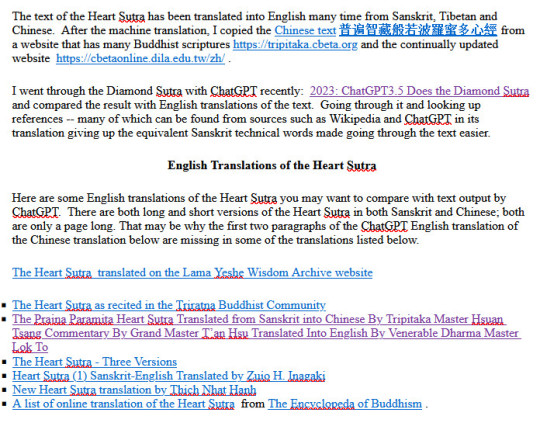
View On WordPress
#Avalokiteshvara#Buddhist scripture#ChatGPT#Chinese#contemplation#Dalai Lama#DeepL#emptiness#experience#Heart Sutra#language#machine translation#Sanskrit#spiritual#stages#sutra#Tibetan#translation#普遍智藏般若波羅蜜多心經#佛教
0 notes
Text
Sanskrit, Music, and Science: Learn the art of mastering any accent
Sanskrit is no ordinary language. It's probably the only language that has originated from music. So its versatility can help us master any accent of any language in the world. Today I take a look at the origin of Sanskrit and its science of pronunciation
The planet Earth inhabits over 8 billion people on 7 continents, consisting of at least 200 countries. And we have disagreements from time to time. Some of these disagreements are always ongoing because they sprout from differences in culture, region, and language. While other things may or may not be in our control, language is something that surpasses all barriers because all humans have this…

View On WordPress
#accent#damru#jayatu sanskritam#kailash#Maheshwara Sutra#nataraja#Panini#priyafied#sanskrit#sanskrit effect#shiva
0 notes
Text

[Image above: Kumārajīva (344–413) was a Buddhist monk, scholar, missionary and translator from the Kingdom of Kucha (present-day, Aksu County, Xinjiang Uyghur Autonomous Region, China). The following is presumed to be one of the anecdotes referred by him.]
Buddha to his disciples, mini-series (16)
500 pieces of firewood - Never too late
An old man who had become an alcoholic came to see the Buddha in regretting what he did. He feared the consequences of the crimes he had committed. To the old man, the Buddha taught:
“Suppose we take down to the ground 500 carloads of firewood pulled by white elephants, how many carloads of fire would it take to burn all of this?” the Buddha asked.
“How many cars' worth of fire? No, just a little bit, a pea-sized fire is enough,” the oldman replied.
"Yes, that's right. Even if your accumulated sins are equivalent to 500 carloads, they will disappear if you confess," replied the Buddha.
Avadana 40
Note: Avadāna is one of the twelve-part sutra, a classification of Buddhist scriptures, which relates the good deeds of past lives to the events of their later lives. It mainly refers to the stories of the present and past (previous) lives of the Buddha's disciples, which explain the truth of good causes and effects and bad causes and effects. Avadāna is basically literature developed in tribal Buddhism, which flourished in the post-A.D. centuries from northern to north-western India.
However, there is some confusion with Jātaka (Ref), as many of the stories are on previous lives of Buddha, although they are called Avadāna. As the cult developed over time, it became mixed with neighbouring dialects and Sanskrit, and it is thought that a mixed Buddhist Sanskrit was formed that escaped regionalism. Therefore, the details and background of these Buddhist texts have not been clarified.
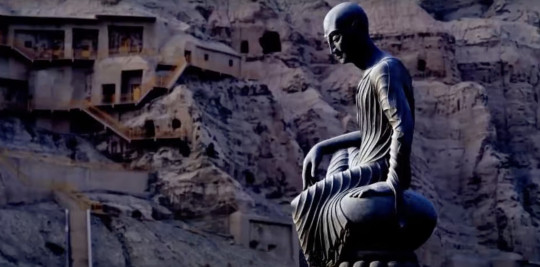
[画像: 鳩摩羅什 (くまらじゅう、梵:クマーラジーヴァ、344年 - 413年) は、亀茲国 (きじこく: 中国新疆ウイグル自治区クチャ市) 出身の西域僧、仏教普及に貢献した訳経僧である。下記は彼により紹介された逸話の一つであると推定されている。]
ブッダから弟子たちへ、ミニシリーズ (16)
五百台の薪 〜 決して遅くはない
酒浸りになっていた老人が、自己を反省して釈迦に会いにやって来た。彼は、これまでに自分が犯した罪業の報いを恐れていた。そんな老人に向かって、釈迦は次のように教えた:
「かりに白象の引く五百台の車いっぱいに積んだ薪を地面に降ろして、これを全部燃やすには、車何台分の火が必要か?」と問う釈迦。
「車何台分の火ですって?いいえ、ほんのちょっぴり、豆粒ほどの火で十分です」と答える老人。
「そうだ。あなたの重ねた罪が、たとえ車五百台分であったとしても、懺悔をすれば消えるのだ」と釈迦は答えた。
衆経撰雑譬喩 (アヴァダーナ) 40
注: アヴァダーナとは、仏典経典の分類である十二部経のひとつで、前世の善行を後世の出来事に結びつける仏教文献の一種。主に仏弟子の現世と過去(前世)の物語を指し、善因善果と悪因悪果の真理を説く。アヴァダーナは基本的に、紀元後数世紀にインド北部から北西部にかけて栄えた部派仏教で発達した文学である。
ただし、アヴァダーナと呼ばれるものの、釈迦の前世に関する話が多いため、ジャータカ(参照)と混同されることもある。仏教教団が発達するにつれて、近隣の方言やサンスクリット語と混じり合い、地域性を免れた混成仏教サンスクリット語が形成されたと考えられている。そのため、これらの仏典の詳細や経緯は明らかにされていない。
110 notes
·
View notes
Text
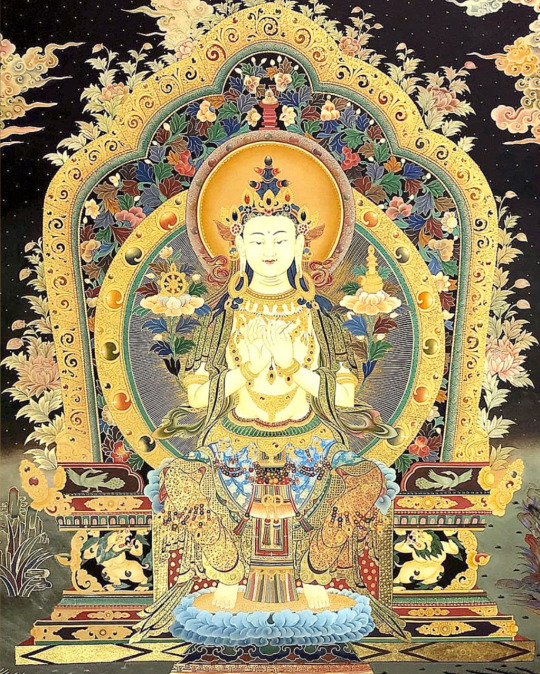
Maitreya ~ An Ornament of the Mahayana Sutras
Sanskrit: Mahayana Sutralamkara
Homage to all the buddhas and bodhisattvas.
Enlightenment
Just as the precious gem effortlessly
Shines with its own light,
So too, the buddhas, without thinking, Assuredly demonstrate their deeds.
#buddha#buddhist#buddhism#dharma#sangha#mahayana#zen#milarepa#tibetan buddhism#thich nhat hanh#maitreya
32 notes
·
View notes
Text
Chakras - What they really are

(I managed to salvage this post written by @rue-cimon from an old deactivated account. I copied it down here because this was too good a post to lose.)
Chakra literally means "wheel" or "circle" in Sanskrit. The concept of chakras originates from Hinduism in ancient India. These are focal points used in a variety of ancient meditation or yoga practices. These practices are collectively called "tantra".
Although the concept is frequently found in early traditions of Hinduism and are often mentioned in the Vedas, beliefs around chakras differ between various Indian religions. Buddhist texts consistently mention 5 chakras, whereas Hindu texts and sources speak of 6 or 7 chakras.
Early Sanskrit texts speak of them both as meditative visualizations combining flowers and mantras and as physical entities in the body. Within kundalini yoga, various breath exercises, visualizations, mudras, kriyas, and mantras are focused on manipulating the flow of subtle energy through chakras.
Chakras are also present in Ayurvedic traditions.
The belief behind chakras is that human life simultaneously exists in two parallel dimensions, one is the physical body and the other is psychological, emotional, mind, non physical (the subtle body).
The aforementioned subtle body is energy, while the physical body is mass. The psyche or mind plane corresponds to and interacts with the body plane, and the belief holds that the body and the mind mutually affect each other. The subtle body consists of energy channels connected by nodes of psychic energy called chakras.
The chakras - in Hindu and Buddhist texts - are said to be arranged in a column along the spinal cord, from its base to the top of the head, connected by vertical channels. Tantric traditions strive to awaken, master, and energize these chakras through yoga and often with the help of a teacher.
The esoteric traditions in Buddhism generally teach four chakras. In some early Buddhist sources, these chakras are termed as manipura (navel), anahata (heart), vishuddha (throat), and ushnisha kamala (crown). However, a system of five chakras is common among classes of tantra in Tibetan Buddhism. These five chakras are basal, abdominal, heart, throat, and crown, and each chakra corresponds with an element, a Buddha, and a bija mantra.
The more common and most studied chakra system incorporates six major chakras along with a seventh center generally not regarded as a chakra.
The chakras are traditionally considered meditation aids. The yogi starts from lower chakras and progresses to the highest chakra located in the crown of the head, in the journey of spiritual ascent.
In the Hindu kundalini and Buddhist candali traditions, the chakras are pierced by a dormant energy residing near or in the lowest chakra. in Hindu texts she is known as Kundalini, while in Buddhist texts she is called Candali or Tummo.
Some terms and definitions:
Tantra: Esoteric traditions in Hinduism and Buddhism that developed in India mainly during the middle of the 1st millennium CE. The term tantra, in the Indian traditions, also means text, theory, system, method, instrument, technique, or practice. A key feature of these traditions is the use of mantras.
Kundalini yoga: A type of yoga focused on channeling energy through the chakras.
Mudra: A symbolic or ritual gesture or pose in Hinduism, Jainism, and Buddhism. Mudras have meaning in many forms of Indian dance and yoga. In hatha yoga, mudras are used in conjunction with pranayama (yogic breathing exercises), generally while in a seated posture, to stimulate different parts of the body involved with breathing and to affect the flow of prana and is associated with consciousness in the body. Mudras are also used in tantric practices.
Kriya: Practice within a yoga discipline meant to achieve a specific result. The Yoga Sutra of Patanjali defines three types of kriya, namely asceticism, study, and devotion. Such yoga is called kriya yoga. Kriya is a Sanskrit word that literally means "to do" or "to work".
Mantra: A sacred utterance, a sound, a syllable, word, or phonemes, or group of words in Sanskrit, Pali, and other languages. They hold spiritual and religious significance. At its simplest, the word "om" serves as a mantra. It is believed to be the first sound which was originated on earth. It creates a reverberation in the body which helps the body and mind to be calm. In more sophisticated forms, mantras are melodic phrases with spiritual interpretations such as a human longing for truth, reality, light, immortality, peace, love, knowledge, and action. Not all mantras have literal meanings but rather are simply uplifting.
Ayurveda: An alternative medicine system with historical roots in ancient India.
#chakras#hinduism#buddhism#witches of color#asian religions#eastern spirituality#ancient india#asian witches#buddhist witches
268 notes
·
View notes
Photo
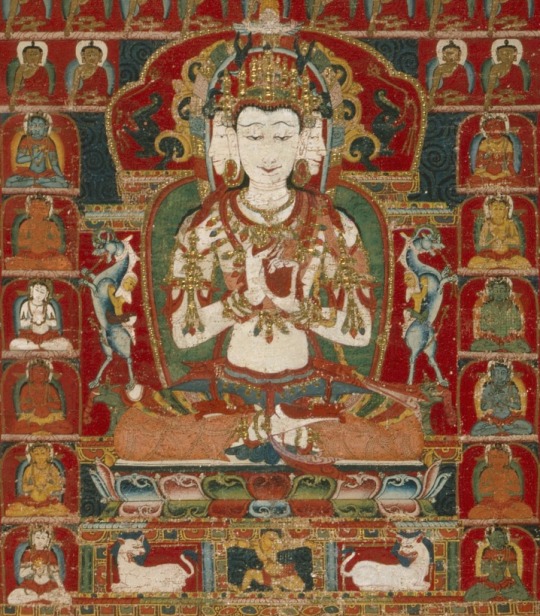
Vairocana is a celestial or cosmic Buddha, or sometimes interpreted as a primordial Buddha, or later as the Dharmakāya of the Guatama Buddha. Dharmakāya is one of the three bodies (trikāya) of a buddha in Mahāyāna Buddhism. The dharmakāya constitutes the unmanifested, "inconceivable" (acintya) aspect of a buddha out of which buddhas arise and to which they return after their dissolution.
A sutra ‘Vairocana’s Awakening Sutra’ is an early Tantric manual. It begins in the celestial palace symbolizing all existence with the Vairocana Buddha conversing with a disciple.
read an English translation here
https://www.bdk.or.jp/document/dgtl-dl/dBET_T0848_Vairocana_2005.pdf
#sutra#buddhism#vairocana#tantra#tantric#scripture#sanskrit#tibetan#art#artwork#meditation#enlightenment#yoga
46 notes
·
View notes
Text
From “The Flower Bank World” in the Avatamsaka Sutra

The Buddhist Painting of Songgwansa Temple, Suncheon, South Korea (Illustration of Avatamsaka Sutra)
“Then Universally Good also said to the assembly, ‘In the land masses of this ocean of worlds are seas of fragrant waters, as numerous as atoms in unspeakably many buddha-fields. All beautiful jewels adorn the floors of those seas; gems of exquisite fragrances adorn their shores. They are meshed with luminous diamonds. Their fragrant waters shine with the colors of all jewels. Flowers of all kinds of gems swirl on their surfaces. Sandalwood powder settles on the bottom of the seas. They emanate the sounds of Buddhas’ speech. They radiate jewellike light. Boundless enlightening beings, holding various canopies, manifest mystic powers causing the adornments of all worlds to appear therein. Stairways of ten kinds of precious substances are set out in rows, with balustrades of ten kinds of jewels surrounding them. White lotuses ornamented with jewels, as many as atoms in four continents, are spread over the waters, in full bloom. There are unspeakable hundreds of thousands of billions of trillions of banners of ten precious elements, banners of belled gauze of raiments of all jewels, as many as sand grains in the Ganges river, jewel flower palaces of boundless forms, as many as sand grains in the Ganges river, a hundred thousand billion trillion lotus castles of ten precious substances, forests of jewel trees as many as atoms in four continents, networks of flaming jewels, as many sandalwood perfumes as grains of sand in the Ganges, and jewels of blazing radiance emitting the sounds of Buddhas’ speech…”
--From book five “The Flower Bank World” in the The Flower Ornament Scripture (Buddhāvataṃsaka Sūtra), translated from Chinese by Thomas Cleary. The various sutras were originally composed in Sanskrit and compiled and translated into Chinese in the 5th century CE. Thomas Cleary’s English translation is based on the Chinese translation done by the Khotanese monk Shikshananda (652-710 CE), who translated it at the request of the Tang Empress.
I stumbled upon this sutra in the back of a book that included a ‘glossary of buddhist terms’ while at a Zen meditation retreat. Flower cosmology? That sounds like my shit. Since I didn’t have my phone I wrote the name down on a piece of paper and slipped it into my backpack. It really is as incredible as I imagined it to be.
“Alan Fox has described the sutra's worldview as ‘fractal’, ‘holographic’, and ‘psychedelic’”—yes.
“In the Huayan school, the teaching of interpenetration is depicted through various metaphors, such as Indra's net, a teaching which may have been influenced by the Gandhavyuha chapter's climax scene in Vairocana's Tower. Indra's net is an infinite cosmic net that contains a multifaceted jewel at each vertex, with each jewel being reflected in all of the other jewels, ad infinitum. Thus, each jewel contains the entire net of jewels reflected within.”
#Avataṃsaka Sūtra#Avatamsaka Sutra#flower garland sutra#Hwaeom#Kegon#Huayan Buddhism#Huayan#chan buddhism#Xianshou#water#buddhism#religion#mysticism#Thomas Cleary#literature#philosophy#metaphysics of flowers#The Flower Ornament Scripture#Buddhāvataṃsaka Sūtra#Buddhāvataṃsaka-nāma-mahāvaipulya-sūtra#Sanskrit
65 notes
·
View notes
Text
|| Tantra: An Unexplored Science, Basic Meaning Explained. How Is It Connected To Bhagawan Shiva? ||
In Hinduism, there are three ways to worship any Deity-
1. The satavik way- In which we show our devotion to a deity using satvik ways like ringing the bell, offering jal, prasad etc.
2. The rajasik way- In which we show our devotion by dressing up in a specific way, using fragrance, using ratnas, some yantra etc.
3. The tamasik way- In which we show our devotion by using some specific rituals, dead bodies, animal sacrifices, sex etc.
It is common for people to misunderstand tantra, but it shouldn't come as a surprise because everyone possesses different qualities within them, namely Sato (purity), Rajo (activity), and Tamo (darkness).
Tantra provides a pathway to worship the divine through the Tamo aspect of our nature. In essence, Tantra is a science of the mind, a form of psychological exploration that aims to expand one's perception. The term 'Tantra' originates from Sanskrit and has multiple interpretations. One explanation is that it is a play on the word 'sutra,' which means 'thread' or 'formula.' If sutras represent individual threads of thought, Tantra can be likened to a loom that weaves these threads together into a comprehensive system of thoughts.
Another understanding is that Tantra combines the words 'tattva,' meaning the science of cosmic principles, and 'mantra,' referring to the science of mystical sound and vibration. In this sense, Tantra delves into the knowledge of universal principles and the use of sacred sounds for spiritual purposes.
According to Hindu beliefs, at the beginning of Satyuga, Bhagawan Shiva appeared as Swacchandanatha, possessing five mouths representing his five energies: Consciousness Bliss Will Knowledge, and Action. Through these energies, Shiva revealed the Tantras, some spoken through each of his mouths and others simultaneously recited through multiple mouths. These Tantras fall into two main categories: Dualistic and Mono-Dualistic, known respectively as "Shiva Tantra" and "Rudra Tantra."
When these five energies of Bhagawan Shiva unite in a way that each holds the others simultaneously, they give rise to 64 Bhairav Tantras, which are purely Monistic (Advaitic) in nature. The philosophical teachings expounded in these Tantras are referred to as the "Trika" philosophy or Kashmir Shaivism.
The origins of the sacred Tantras are believed to involve teachings initially given by Bhagawan Shiva to his wife, which were then passed on to human sages like Matsendranath. It is crucial to understand that Tantra does not advocate promiscuity but rather emphasizes extreme discipline. It is viewed as a technology or method to harness the energies within the body and from the surroundings.
According to Tantra, every human being with limited mental vision is spiritually ill. The true state of health is attained by transcending the constraints of time, space, and causation. The ultimate goal of Tantra is to replace the limited personality with an unlimited and permanent one, facilitating spiritual liberation and profound transformation. Indeed, the practice of Tantra is deeply rooted in the tradition of receiving Guru Diksha or initiation from a qualified spiritual teacher.
As Bhagawan Shiva emphasized in the Kularnava Tantram, all the practices advocated by Tantras, such as Yoga, Dhyana (meditation), Puja (worship), Japa (chanting), and others, are considered futile without proper initiation (adikshata). Just as seeds sown on stones fail to grow into plants, similarly, the efforts of an uninitiated person in these practices may not bear fruit. It's crucial to understand that Tantra is a profound and intricate spiritual path that goes beyond the understanding of today's science. It is not synonymous with black magic or superficial spells (tona totka). Instead, it involves a deep exploration of the mind, energy, and spiritual consciousness.
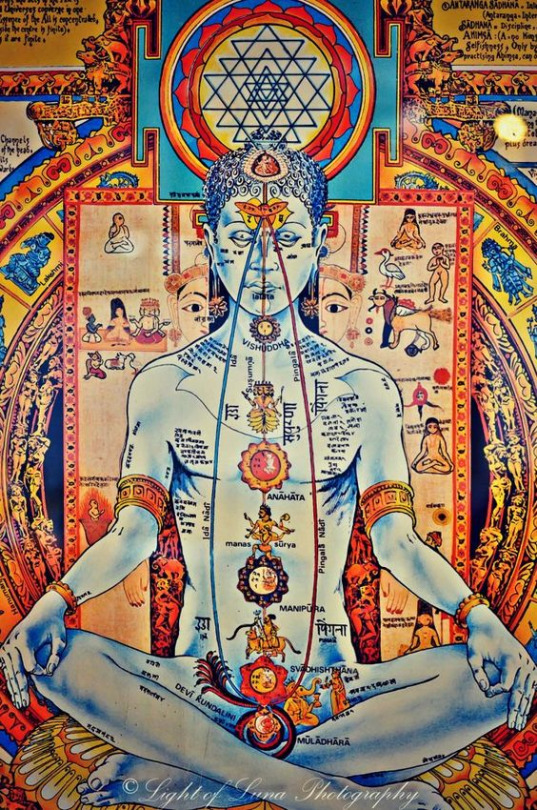
27 notes
·
View notes
Text
Beginner Class - Introduction to Meditation
Ancient Craft & Occultism
Introduction to Meditation
___
By KB
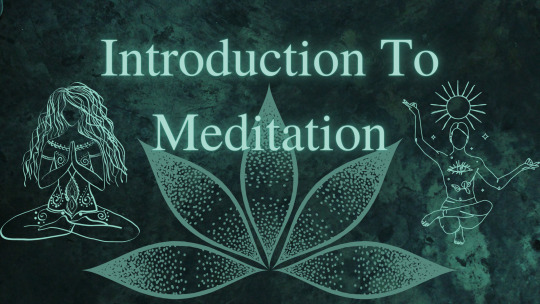
Introduction
Hello again, everyone! Welcome back to the next lesson for the Beginner Class. Last lesson, we talked about finding your personal center as well as a bit more in depth on grounding. Well, today, we'll be taking a closer look at the many forms and practices of meditation.
What Is Meditation?
Meditation is an essential aspect of witchcraft and magic practice as it allows you to interact with the universe (or your higher power) through conscious thought and focused desire. Ritual, spellwork, and your regular thoughts and speech are examples of other techniques. Meditation is a discipline in which one trains the mind and creates a state of consciousness in order to gain some advantage. Meditation encompasses a wide range of different activities and practices. We will go into more detail in the following sections.
Nearly every culture in the world has some connection to meditation. Whatever the design, they are typically intended to encourage connecting with spiritual guidance, feeling at ease, developing inner strength, having psychic visions, becoming closer to God, remembering former lives, going on astral journeys, and more. Meditation is a well-known, age-old technique that has been used for millennia to promote calmness, concentration, and connection with our inner selves. The benefits of meditation on the mind, body, and soul are reciprocal.
A Brief History
In actuality, nobody is certain of the exact beginning and location of meditation. But our theories are supported by facts. This ancient rite is mentioned in many civilizations and religions, including Hinduism, Buddhism, Judaism, Islam, and Christianity. All of these faiths have something to offer to the modern understanding of meditation as it is practiced today. Although the history of meditation is controversial, many people think it began there more than 5000 years ago.
India Origins
It is generally accepted that the Vedas, a collection of Hindu writings, include the oldest written account of meditation. The Vedic books were written around 1500 BCE. The Vedas include mention of a practice known as "Dhyana," which is considered to be the first example of meditation that we are aware of. In Sanskrit, the word "dhyana" implies "contemplation" or "meditation." It is intended to calm the mind and attain "thoughtless awareness." However, Vedantism is frequently rejected by Buddhist beliefs in favor of the Buddha's teachings.
The various Buddhist levels of meditation can also be found in other ancient Indian scriptures dating back to the first century BCE. These texts are known as the Pli Canon Sutras. The Pli Canon is a body of Theravada Buddhist literature. And then there's Buddha. Siddhartha Gautama, an Indian prince, was the inspiration for Buddha. He was looking for a means to end human pain. Gautama attempted numerous strategies, but none of them seemed to work. He sat down under a tree one day and determined not to move until he discovered the solution he sought. He attained enlightenment after 49 days of meditating and started the Buddhist faith. The practice of meditation is claimed to have spread throughout India from there. Buddhist monks embraced meditation as a means of achieving inner peace, frequently sitting for hours in silence, meditating on their master's teachings.
Asia Origins
Around the sixth century BCE, the practice of meditation spread to China, where it was influenced by Taoism and Buddhism. At the end of the Han dynasty, Buddhist monks from India introduced meditation to China. Over the next century, the practice began to blend into Chinese culture. The Taoists also believed in the efficacy of meditation and devised their own techniques for mind-stilling. One famous Taoist meditation practice is known as "Qigong." Qigong is a type of moving meditation that entails slow, gentle motions as well as deep breathing. Meditation extended from China to Japan, Korea, and other parts of Asia. Zen Buddhists perform "Zazen," a type of meditation practiced in Japan.
The technique was introduced to Japan by the Japanese monk Dosho, who journeyed to China to study Buddhism under the famous master Hsuan Tsang. Zazen, which translates as "seated meditation," is sitting in quiet with one's eyes closed. Korea has its own type of meditation known as "Won," which is based on Buddhist and Taoist concepts. It is a sort of moving meditation in which gentle, rhythmic motions are used to calm the body and mind.
Western Origins
Meditation became popular in the Western world in the twentieth century. Maharishi Mahesh Yogi was among the first Westerners to popularize meditation. Maharishi is most known for popularizing the technique of "transcendental meditation" in the 1960s. The Yogis are a Hindu group that believes in the power of meditation to help one achieve enlightenment. The term "yoga" truly means "union" or "connection." Yoga seeks to unite the mind, body, and soul.
Other Yogis, such as Paramahansa Yogananda, who penned the classic book "Autobiography of a Yogi," also contributed to the introduction of meditation to the West. Maharishi's method of meditation is closing our eyes and reciting a mantra. A mantra is a word or phrase that is repeated repeatedly. The idea is to concentrate on the chant while clearing our brains.
Meditation & Spirituality
Spirituality is a broad topic with numerous interpretations. In general, it encourages a sense of connection to something larger than ourselves, as well as a connection with your higher self or higher awareness. It promotes the search for meaning in life and living with a broader perspective. It has a highly global appeal--something that all humans can relate to. A spiritual experience may be described as sacred, ethereal, mystical, or transcendent, or simply as a deep sense of positive emotions such as calm, amazement, wonder, connectivity, contentment, appreciation, acceptance, compassion, and unconditional love. All of these are true characteristics of our spirit.
Spiritual meditation, as the term implies, is that which connects you to your spirit. It pushes you past your limiting identities and labels to the core of who you truly are. You as your authentic self - joy, love, and tranquility. You may feel a rain of grace and happiness, as well as a deep sense of closeness and oneness, if you practice spiritual meditation. The desire to practice spiritual meditation stems from an underlying desire to perceive and think beyond the apparent world. Spiritual meditation can assist you in discovering the everlasting truth and meaning of existence. It keeps you anchored in the present moment, where you want to be and find peace.
Any genuine meditation practice, when practiced over time, can aid in your spiritual growth and will begin to provide the following spiritual benefits:
A balanced and grounded sense of being
Experience of deep inner stillness and peace
Radiating serenity, calmness, and love
A sense of awakening and freedom
Less emotional reactions
More awareness and mindfulness
Sense of inner bliss regardless of situation
The feeling of always being home
Belonging and connecting to all
Great abundance and security
Increased creativity and free thinking
More resilient to anger and stress
Meditation & General Health
Although meditation has been practiced for many years and is known to have many positive effects on the mind, it is only recently that science has established a strong connection between meditation and physical health. It's simple to feel overpowered by ideas and emotions in the fast-paced world of today. We all know the damage stress and anxiety can do to our health. Stress and anxiety are frequently caused by emotional overload. Nowadays, professionals from all over the world agree that practicing mindfulness for a little period of time each day can make a huge difference. The advantages of meditation for both the body and the mind are well-documented and very compelling. Here's just a few ways frequent meditation can improve our overall health.
daily meditation practice can improve blood circulation, lower the heart rate and help maintain a healthy heart
frequent mindfulness sessions seemed to improve meditators’ immune system functions
produces positive, lasting changes within the brain
meditation not only supports memory and attention, it also enhances mental agility and alertness
women, in general, who practice mindfulness are more aware and accepting of their bodies (also helps with PMS pain)
meditation develops mental awareness and can help you manage triggers for unwanted impulses
meditation can diminish the perception of pain in the brain
blood pressure decreases not only during meditation but also over time in individuals who meditate regularly
Meditation & Witchcraft
As magical practitioners and witches, one of the most important things we can master is the art of meditation. It allows us to still the soul and quiet the mind, which, in turn, allows us to listen to our intuition and focus on our personal energy. Meditation can also be used as a gateway for higher awareness or entering the astral realm.
Now, meditating may not come easy for a lot of you. This is perfectly normal. When I first started practicing, I had a feeling inside that made me feel extremely goofy, and stupid. The more I ignored it, the louder and stronger it grew. I eventually sat with the voice and came to the conclusion that it was my ego, driven by fear and insecurity. The more I sat with the voice, the less I felt stupid about things. I believe this was my initiative into shadow work. Anyways, back to class -
Utilizing meditation within your craft will prove to be absolutely essential the more you do ritual and spell work. Don't give up hope if "conventional" methods don't work for you. We're going to get into several different techniques of achieving the same meditative state.
Types of Meditation
There are so many different types of meditation, if I went into them all, this lesson would turn into an entire chapter. I'm just going to keep it sweet and simple here, but I absolutely encourage you to look into different methods, especially if none of the ones I have listed work for you. Let's get to it.
Active Meditation
Sitting in silence for even 2 minutes may sound like absolute torture for a lot of you. Good news is, that's not the only way to meditate. Have you ever done a yoga class, a workout session, or even taken a nice, fresh shower & felt a sense of bliss? Well, you experienced a meditative state of mind. You can do this by getting out in nature, cleaning the house, performing an art form, anything that involves movement can be a form of active meditation! Woo-hoo for us neurodivergents!
Body Scan
This method allows you to reconnect the mind to the body in a way that notices any physical sensations or tension. While relaxation naturally happens here, the goal is to pay attention to sensory experiences you typically don't notice. This allows you to be more present in your day to day life and is also a wonderful grounding and centering technique.
Mindful Breathing
The body is wiser than the mind, and this technique proves it. It is a very simple, mindless method, but has very profound effects on the body and mind. There are several breathing techniques out there, which I encourage you all to research on your own. All have different effects on the mind and body, so please be sure to choose one that is suitable for you.
Visual Meditation
This is when you focus your mind's eye, or your imagination, into an image to center the mind and the body. The main focus is to imagine and hone in on a memory or something creative and nice that opens the mind's eye. This is a wonderful exercise for those who want to enhance their visualizing abilities.
Sound Meditation
Again, this is exactly as it sounds. This meditation uses sound to provoke a meditative state of mind and align the bodily energies.
#baby witch#elder witch#beginner witch#witchblr#witchcraft#dark witchcraft#astrology#tarot#aesthetic#divination#meditation
62 notes
·
View notes